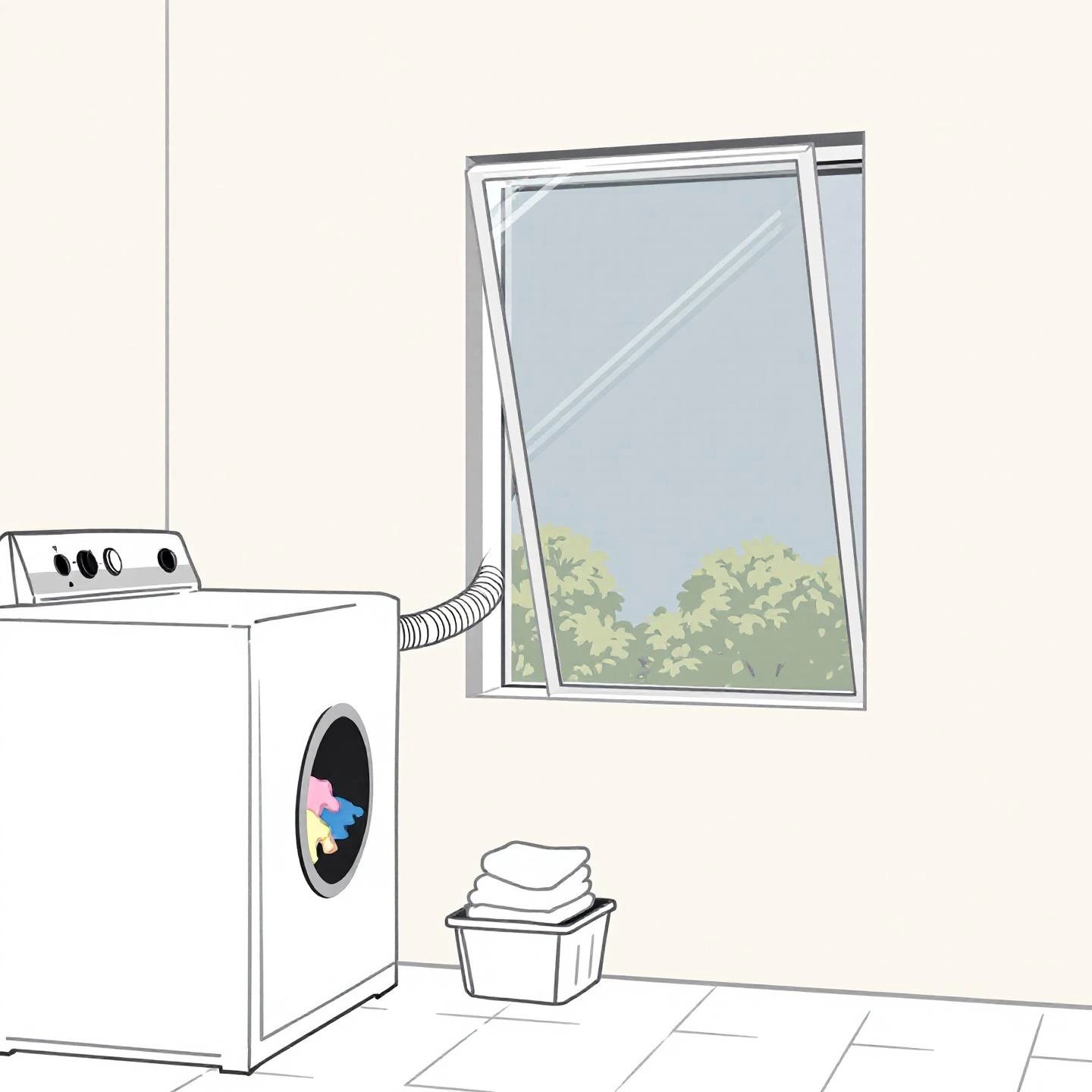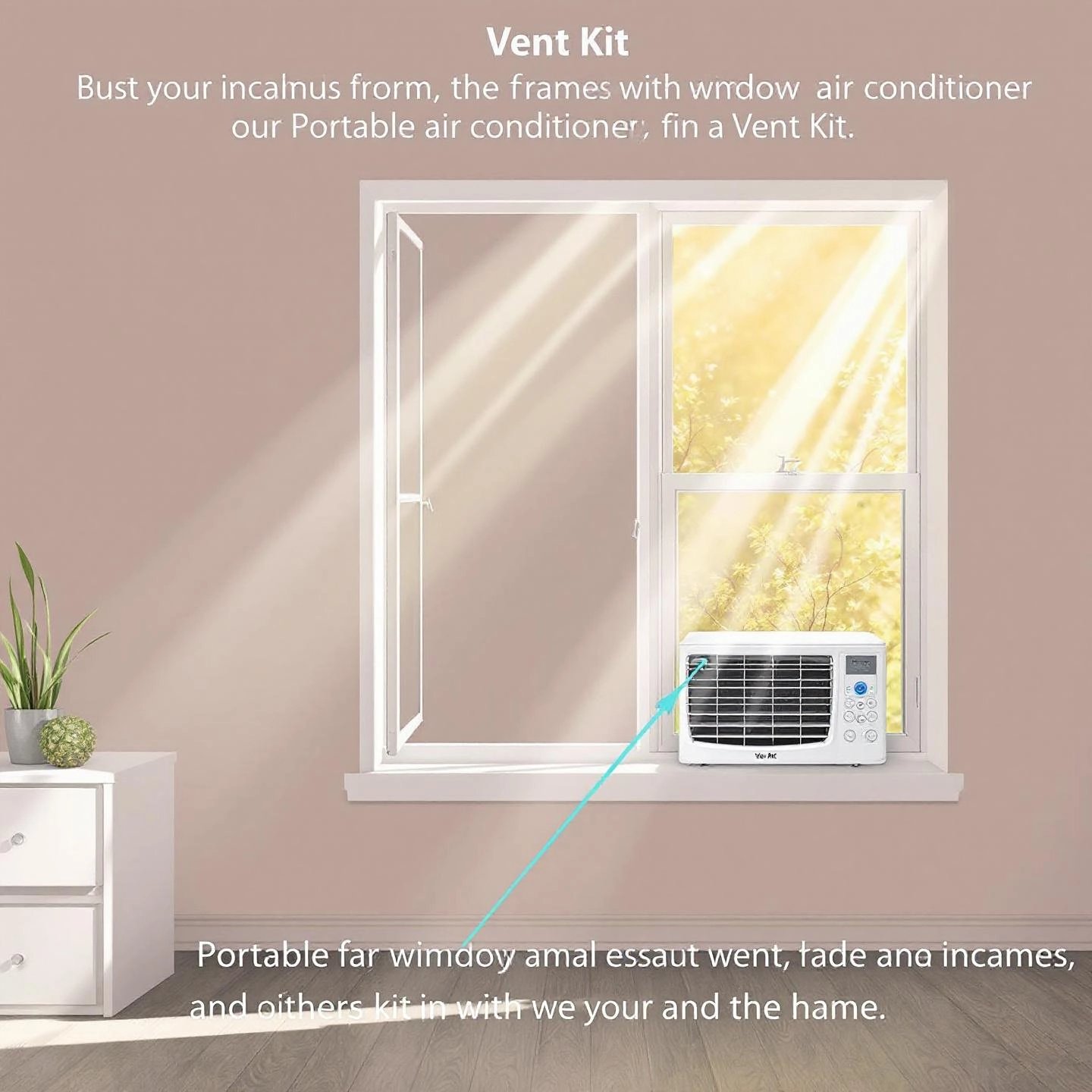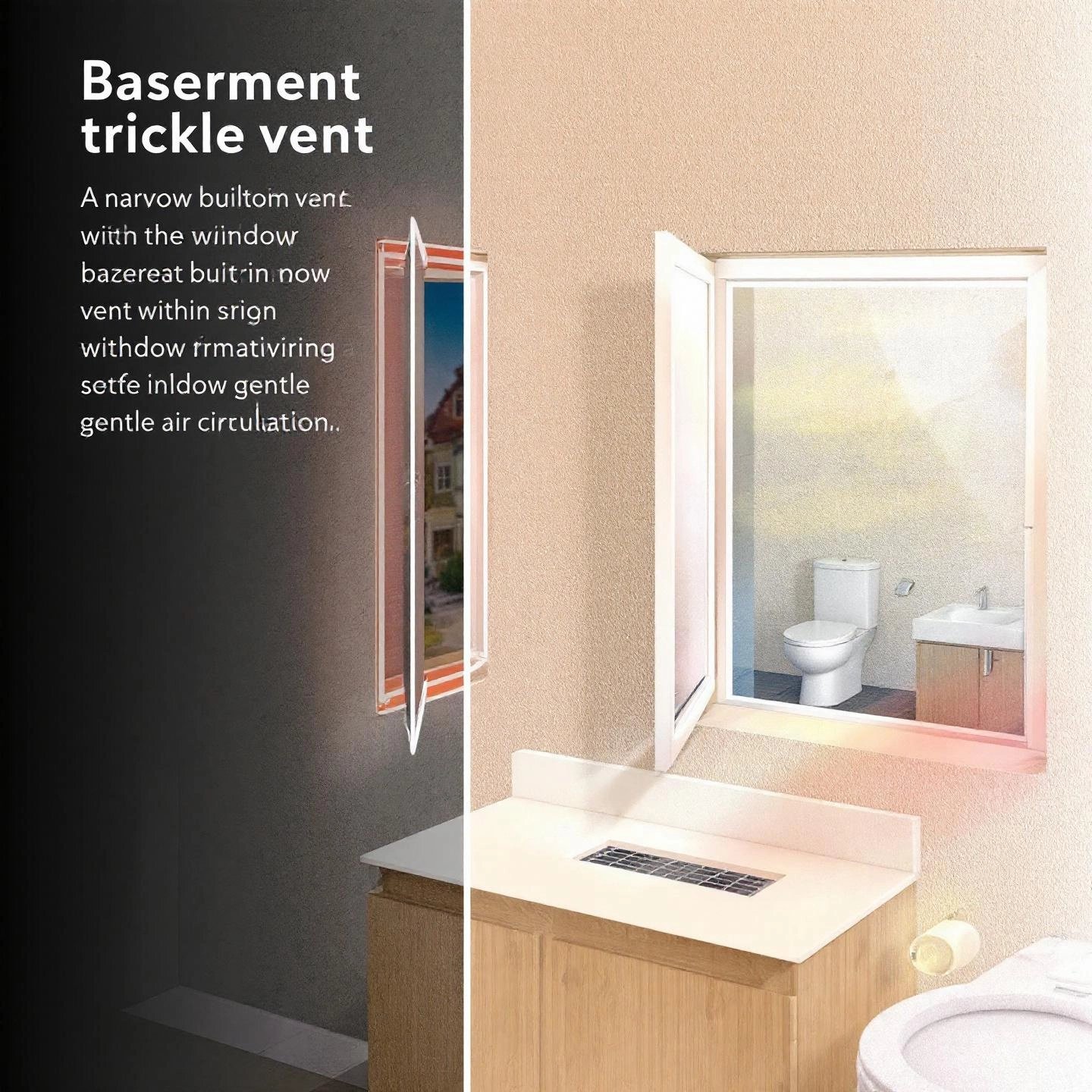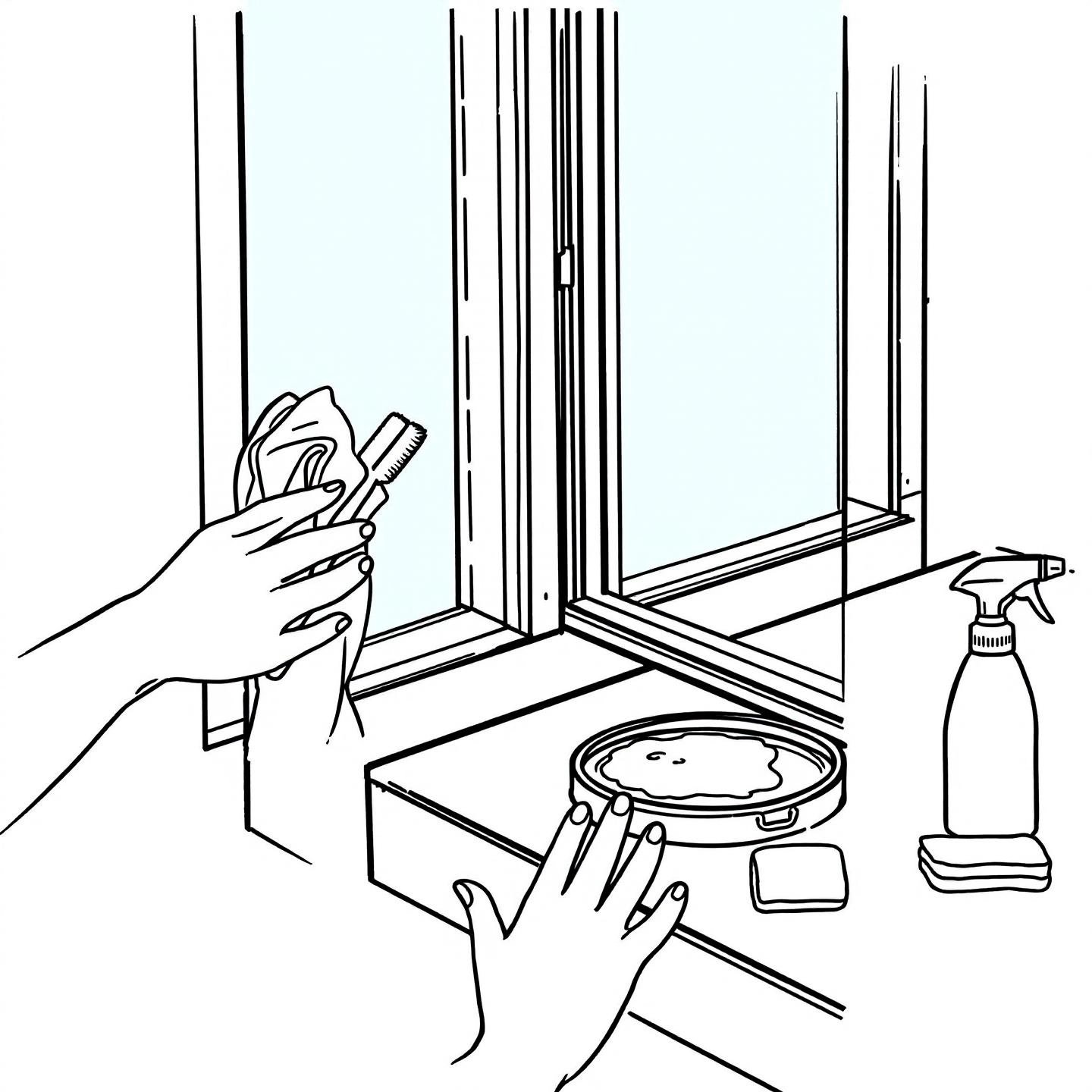
Ever wondered why your home sometimes feels stuffy or why your car windows fog up on a rainy day? The answer often comes down to one simple element: proper ventilation. That’s where a window vent comes in—a discreet yet powerful device designed to facilitate airflow or exhaust through a window opening, improving comfort and air quality wherever it’s used.
But what exactly is a window vent? In its simplest form, it’s a component installed in or around a window frame that allows fresh air to enter or stale, moist air to exit a space. These devices serve a variety of purposes, from enhancing natural airflow in your living room to safely venting heat and moisture from appliances like clothes dryers or portable air conditioners.
Let’s break down the main types of window ventilation solutions you’re likely to encounter:
Whether you’re looking to improve indoor air quality, enhance comfort, or comply with building regulations, window vents offer practical solutions for both homes and vehicles. In the following sections, we’ll explore how different types of window vents work, their key benefits, and how to choose the best option for your needs.
Ever opened a window to let in fresh air, only to invite in noise, drafts, or even a sudden downpour? If you’ve faced this dilemma, you’re not alone. The balance between comfort, health, and energy efficiency is delicate—this is where window vents truly shine. Let’s unpack the core window vent benefits and why you might consider integrating them into your home or vehicle.
Imagine a home that feels consistently fresh, with no lingering odors, no damp patches on the walls, and a comfortable temperature year-round. Or, picture driving on a rainy day, windows slightly open for ventilation but no water or wind noise disturbing your ride. These scenarios are achievable thanks to well-designed window vents, which offer solutions for both residential and automotive needs.
Let’s break down the primary reasons why using a window vent is more than just a convenience—it’s a smart investment in your health, comfort, and property value:
When you weigh the window vent benefits, it’s clear these devices do more than just let air in or out. They play a critical role in:
In the next section, we’ll explore how to put these benefits into action—starting with practical steps for safely venting a clothes dryer through a window. Ready to make your home safer and more comfortable? Let’s dive in.

Thinking about setting up your clothes dryer near a window but not sure how to vent it safely? You’re not alone. Many homeowners—especially in older houses or apartments—find that venting a dryer through a wall just isn’t practical. That’s where a clothes dryer window vent comes in, offering a straightforward, effective solution. But how do you get it right, and what should you watch out for?
Let’s walk through the process of venting your dryer through a window using a dryer vent window kit or a custom plexiglass panel. Imagine you’ve just moved your dryer close to a window—here’s how to make the setup safe and efficient:
It might seem simple, but venting a dryer incorrectly can have serious consequences. Here’s why getting your clothes dryer window vent setup right is so important:
To keep your dryer running safely and efficiently, make these safety practices a habit:
By following these steps and safety tips, you’ll notice your laundry dries faster, your home stays safer, and you avoid headaches from moisture or pests. Ready to tackle other home ventilation projects? Next, we’ll explore how to vent portable air conditioners for cool comfort all summer long.

Ever tried running a portable AC on a hot day, only to find the room barely cools down? If you’ve wondered why, the answer is simple: proper venting is essential. Without a portable air conditioner window vent kit, all that hot, humid air the unit removes ends up right back in your living space, leaving you with little relief and an overworked machine. Let’s break down why venting matters and help you navigate the best options for your space—whether you have traditional windows or need to get creative.
Imagine trying to bail water out of a boat with a hole in the bottom—the effort is wasted if the water keeps coming back in. The same goes for a portable AC without proper venting. These units work by pulling heat and moisture out of the air. If you don’t direct that exhaust outside, the room stays warm and damp, and the AC ends up working twice as hard for half the results. In fact, experts agree: using a portable AC without window vent or another exhaust solution will neutralize any cooling effect, and may even raise the room temperature (learn more).
Most portable air conditioners are designed to vent through a window, using a dedicated kit. But what if your window is an unusual size, or you don’t want to block out the light? That’s where different types of vent kits come in. Here’s a quick look at the main options and how they stack up:
| Type | Description | Pros | Cons | Best Use Cases |
|---|---|---|---|---|
| Standard Adjustable Window Vent Kit | Plastic panel(s) that slide to fit window width, with hose connector. |
|
|
Standard double-hung or sliding windows; renters or temporary setups |
| Plexiglass/Acrylic Panel Insert | Custom-cut clear panel with hose port, replaces or covers window pane. |
|
|
Casement, crank, or specialty windows; long-term or permanent installations |
| Seal/Zipper Window Kit | Flexible fabric or plastic sheet with zipper opening for hose. |
|
|
Temporary setups; renters; windows that open outward or slide vertically |
Not every room has a window, but that doesn’t mean you’re out of luck. Here are some creative alternatives for venting your portable AC:
By understanding your venting options and choosing the right portable air conditioner window vent kit, you’ll enjoy cooler, drier air and a more comfortable home. Next, we’ll shift gears and see how window vents play a key role in automotive comfort and airflow.
Ever wished you could enjoy fresh air in your car without dealing with rain, wind noise, or the risk of debris blowing inside? That’s exactly where automobile window vents—also called car window vents, rain guards, or vent visors—step in to make your drive more comfortable and practical.
Imagine driving on a rainy day: you want to crack your window for ventilation, but you don’t want water dripping onto your seat or fog clouding your visibility. Automotive window vents are slim, aerodynamic accessories—usually made from plastic or acrylic—that attach above your car’s windows. Their main job is to deflect rain, wind, and debris, so you can keep your windows slightly open in almost any weather.
You might hear these products called by several names, depending on where you are or what feature you value most:
All these terms refer to accessories designed to improve airflow and protect your car’s interior from the elements (see reference).
Automotive window vents are a simple upgrade that can make a big difference in daily driving comfort—especially if you live in an area with unpredictable weather or long commutes. Next, we’ll dive deeper into the world of car window visors and rain guards, exploring how to choose the right style and material for your vehicle.
When you’re looking to boost comfort and style in your vehicle, window vent shades—also known as car window visors or rain guards—are a smart upgrade. But with multiple types, materials, and installation methods available, how do you pick the right set for your needs? Let’s break down what matters most, so you can make an informed decision and enjoy all the benefits these accessories offer.
Imagine driving during a downpour, wanting fresh air without soaking your seats, or cruising on the highway without the roar of wind. That’s where car window visors truly shine—they let you crack your window for airflow, reduce wind noise, and keep rain, snow, and debris outside. Plus, they can help prevent fogging and add a sleek, finished look to your vehicle.
When shopping for window vent shades, you’ll encounter two main installation styles: in-channel and tape-on (also called stick-on). Both have unique advantages and potential drawbacks. Here’s a side-by-side comparison to help you choose:
| Feature | In-Channel Visors | Tape-On (Stick-On) Visors |
|---|---|---|
| Appearance | Sleek, factory-installed look; fits inside window channel for a seamless finish | Mounts on exterior of door frame; slightly more prominent, can be low-profile or bold |
| Installation | No adhesive or drilling; snaps into window channel (may require light bending or flexing) | Attaches with automotive-grade 3M tape; quick, easy DIY install (ideal temp: 68–110°F, low humidity) |
| Durability | Secure fit, but may loosen or rattle over time; possible contact with glass can cause light scratches | No contact with glass; strong adhesive holds well, but removal can leave residue if not careful |
| Potential Issues | May interfere with modern automatic window sensors; can be tricky to install perfectly | Adhesive may not stick well in extreme temps/humidity; easier to remove, but adhesive cleanup needed |
| Best For | Drivers seeking an OEM look and are comfortable with a more involved install | Anyone wanting a fast, straightforward installation and easy removal |
Most car window visors are made from one of three materials:
Consider your local climate, driving habits, and style preferences. For example, if you park outside year-round or frequently drive in tough weather, investing in polycarbonate might pay off. If you want a budget-friendly upgrade for a daily commuter, acrylic or ABS plastic will do the job well (see reference).
Ready to upgrade your ride? Whether you choose in-channel or tape-on, acrylic or polycarbonate, window vent shades are a simple way to enhance comfort, airflow, and style. Next, we’ll explore how window vents can improve air quality in basements and bathrooms—key spaces where ventilation is often overlooked.

Ever noticed how basements often feel musty or bathrooms fog up after every shower? These issues aren’t just annoying—they can signal bigger problems like excess moisture, mold, and poor air quality. If you’re searching for ways to create a fresher, healthier home, let’s explore how the right window vent solutions can make all the difference in these challenging spaces.
Basements are notorious for feeling stuffy and damp. Because they’re below ground level, natural airflow is limited, and moisture can easily get trapped. Bathrooms, on the other hand, regularly face high humidity from showers and baths. Without proper ventilation, both spaces become breeding grounds for mold, mildew, and lingering odors, which can impact your health and damage your home’s structure.
Simply opening a window after a hot shower might seem like enough, but it rarely removes all the humid air. That’s where a bathroom vent fan for window comes in. These fans are designed to quickly extract moist air, reducing condensation on mirrors, walls, and ceilings. The result? Less risk of mold, less peeling paint, and a bathroom that stays fresher longer.
When choosing and installing a bathroom fan, always consider electrical safety—placement must comply with regulations regarding water and electricity proximity. For best results, position the fan close to the source of moisture, such as above the shower or bath.
Basement air tends to stagnate, leading to musty smells and higher humidity. A basement window vent fan is a straightforward solution. By installing a fan directly in a basement window, you can:
For best results, choose a fan with adjustable speed and, if possible, a built-in humidity sensor to keep basement air below 60% relative humidity—a key threshold for mold prevention.
What if you want a solution that doesn’t require electricity or noisy fans? Enter the window trickle vent. These slim, discreet vents are integrated into the window frame and allow a small, controlled flow of fresh air—even when the window is closed. Trickle vents are especially beneficial in:
Modern building regulations increasingly require trickle vents for new or replacement windows, especially in well-insulated homes where natural air exchange is limited. Unlike opening a window fully, trickle vents offer consistent, passive ventilation—reducing the risk of condensation, mold, and stuffiness while keeping your home secure and energy efficient.
If you’re looking for a high-performance, long-lasting solution, Shengxin Aluminum’s window trickle vents are purpose-built for modern homes. Their slim design fits seamlessly into uPVC frames, offering easy manual control and reliable, weather-resistant performance. These vents are retrofit-friendly—ideal for both new windows and upgrades—and help maintain a healthy, comfortable environment without the need for complex renovations or sacrificing your window’s insulation or appearance.
Whether you opt for a bathroom vent fan for your window, a basement window vent fan, or a passive trickle vent, addressing ventilation in these critical spaces will transform your home’s air quality. Up next, we’ll look at how to choose and install a general-purpose window vent kit for broader residential needs.
When you’re ready to improve airflow or exhaust in your home, picking the right window vent kit can seem overwhelming. With so many styles, materials, and features available, how do you know which one is the best fit? Let’s simplify the process with a practical checklist—so you can confidently select and install an adjustable window vent that delivers comfort, security, and lasting value.
Imagine you’re standing in front of a window that needs better ventilation. What matters most? Here’s a structured checklist to guide your decision:
| Feature | What to Check | Why It Matters |
|---|---|---|
| Compatibility |
|
Ensures a snug, secure fit and smooth installation. |
| Material Quality |
|
Withstands daily use, weather, and temperature changes without warping or degrading. |
| Adjustability |
|
Adapts to different window sizes and user preferences for airflow. |
| Security |
|
Protects your home from intruders and maintains privacy. |
| Weatherproofing |
|
Prevents leaks, condensation, and energy loss. |
| Ease of Installation |
|
Makes DIY projects stress-free and accessible for most homeowners. |
If you’re searching for a solution that stands the test of time, aluminum window vent kits are an excellent choice. Aluminum is lightweight, rust-resistant, and strong—making it ideal for both new installations and retrofits. For those who want a premium, long-lasting option, Shengxin Aluminum’s window trickle vents offer a slim, modern profile with reliable, weatherproof performance. Their easy manual slider and robust construction mean you can enjoy fresh air and peace of mind, year after year.
By using this checklist and prioritizing quality materials and thoughtful design, you’ll notice a real difference in your home’s comfort and efficiency. Next, we’ll cover simple maintenance tips to help you keep your window vent—no matter the style—in top condition for the long haul.

Ever wondered why your window vent isn’t performing like it used to, or noticed lingering odors and stuffy air even after installing the best vent kit? The answer often lies in regular upkeep. Just like any part of your home or car, window vent maintenance is essential for keeping airflow smooth, energy bills low, and safety risks at bay. Let’s break down easy, practical tips for cleaning window vent systems—organized by vent type—so you can keep your investment working its best.
By following these simple habits for window vent maintenance and cleaning window vent features, you’ll extend the life of your vents, improve indoor air quality, and enjoy safer, more efficient airflow. Ready to wrap up? In our conclusion, we’ll recap the big takeaways and help you choose the best long-term window vent solutions for your home or vehicle.
When you step back and look at the big picture, it’s clear that window vent solutions are more than just add-ons—they’re essential tools for creating healthier, more comfortable spaces in every corner of your home or vehicle. Whether you’re venting a clothes dryer, keeping your portable AC running efficiently, preventing bathroom fog, or simply seeking fresher air in a sealed living room, the right vent makes a measurable difference.
Imagine the peace of mind that comes from knowing your family breathes easier, your home stays dry and mold-free, and your car rides are quieter and more pleasant. That’s the power of thoughtful ventilation.
For those seeking a reliable, long-term improvement—especially in modern, well-sealed homes—Shengxin Aluminum’s window trickle vents stand out. Their slim, discreet design fits seamlessly into uPVC frames, providing quiet, controlled airflow that tackles stuffiness, condensation, and stale air without compromising insulation or aesthetics. Easy to install and built to last, these vents offer a premium solution for anyone serious about indoor air quality and comfort.
In the end, choosing the right window vent solution is about more than ticking a box for building codes—it’s about creating a space where you, your family, and even your car can thrive. Take a moment to review your needs, explore your options, and invest in a solution that delivers fresh air, comfort, and peace of mind for years to come.
Installing a window vent helps regulate indoor humidity, reduces condensation, and prevents mold growth. It also improves air quality by allowing fresh air in while keeping your space secure and energy efficient, which is especially important in modern, well-insulated homes.
Yes, you can use a dryer vent window kit or a custom panel to safely exhaust your dryer through a window. Proper installation is crucial to prevent lint buildup, moisture damage, and fire hazards. Always use rigid or semi-rigid ducts and seal all connections tightly for safety.
Portable air conditioners can be vented using standard adjustable window vent kits, custom plexiglass or acrylic panels, or seal/zipper kits. The best choice depends on your window style, need for insulation, and whether you want a temporary or permanent solution.
Automotive window vents, also known as rain guards or visors, allow you to crack your windows for fresh air even during rain. They reduce wind noise, prevent water entry, and help keep your car interior comfortable and free from fogging.
Shengxin Aluminum’s window trickle vents feature a slim, discreet design for uPVC frames, easy manual control, and robust weather resistance. They provide continuous, passive ventilation, improving indoor air quality and comfort without major renovations.
 un service en ligne
un service en ligne 0086 136 3563 2360
0086 136 3563 2360 sales@sxalu.com
sales@sxalu.com +86 136 3563 2360
+86 136 3563 2360